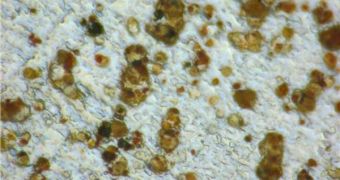When speaking about pollution, carbon dioxide, soot and methane are usually regarded as being the worst of its kinds. These particles are fairly small and, in addition to ruining the atmosphere, also have the ability to ruin people's lungs and lives. Because the public eye has been focused on combating these types of particles, the smaller, ultra-fine ones went by largely unnoticed. And this proves now to be a fatal error, as more and more people get sick each day, AlphaGalileo reports.
In addition to helping us breath, our noses perform another essential function, and that is basic decontamination. This means that most particles above a certain size are trapped in soft, wet tissue, and are then eliminated. However, in the case of ultra-fine particles, down to the microscale, there is little our body's defense systems can do. The stuff passes right through our noses, and straight into the lungs, where it starts accumulating and blocking out the pores through which the blood exchanges carbon dioxide and oxygen with the air in the lungs.
What you get is slow and methodical asphyxiation, alongside a host of other pulmonary conditions, including edema, which leads to respiratory failure, and death. Some of the particles causing such diseases are less than 100 micrometers in diameter, which makes them a pain to measure. Now, German experts at the Fraunhofer Institute for Laser Technology ILT, in Aache, have developed a new technique for measuring this type of emissions.
“The statutory limit values for fine particle emissions are based on the total particle weight. Large particles are, however, much heavier than small ones. Weight measurements do not provide any information on the quantity of ultra-fine particles in the fine dust, but they are often more harmful than the larger particles,” ILT Project Manager, Dr. Cord Fricke-Begemann explains. The method encompasses two steps, the expert adds, one in which the particles are sorted by category via a gas stream, and then collected on filters, and another one in which laser emission spectroscopy (LES) is used to make out their composition.
“We are therefore able to identify harmful heavy and transition metals, such as zinc, in the fine dust, and also to ascertain the particle size at which they become particularly enriched,” the expert concludes.

 14 DAY TRIAL //
14 DAY TRIAL //